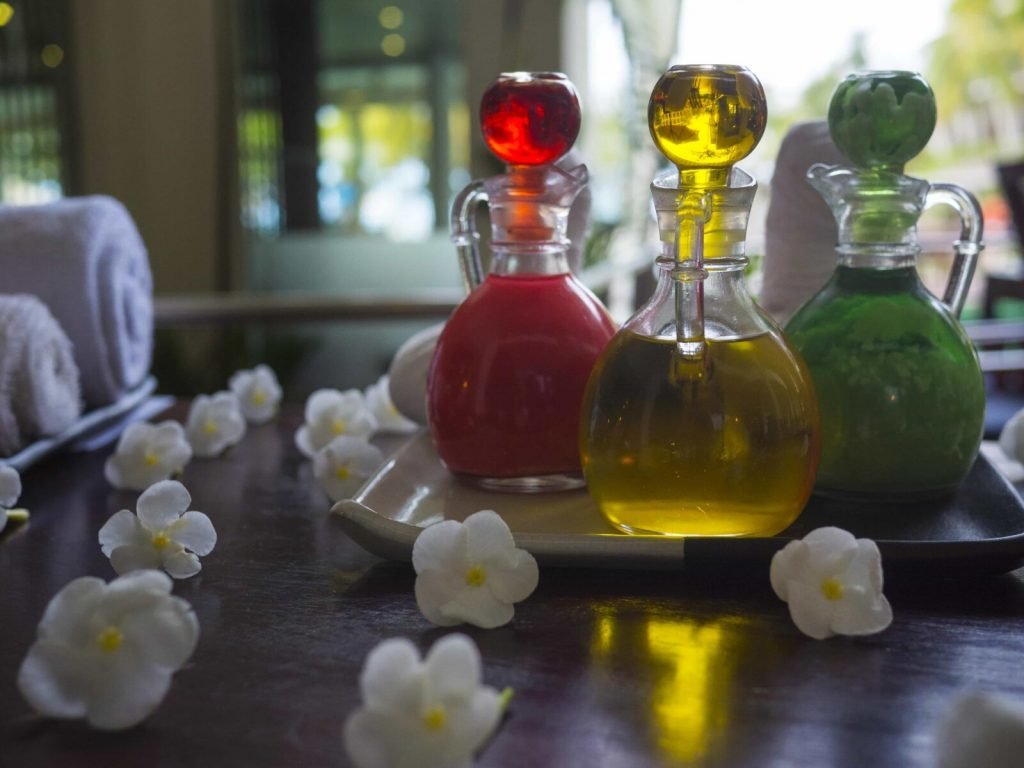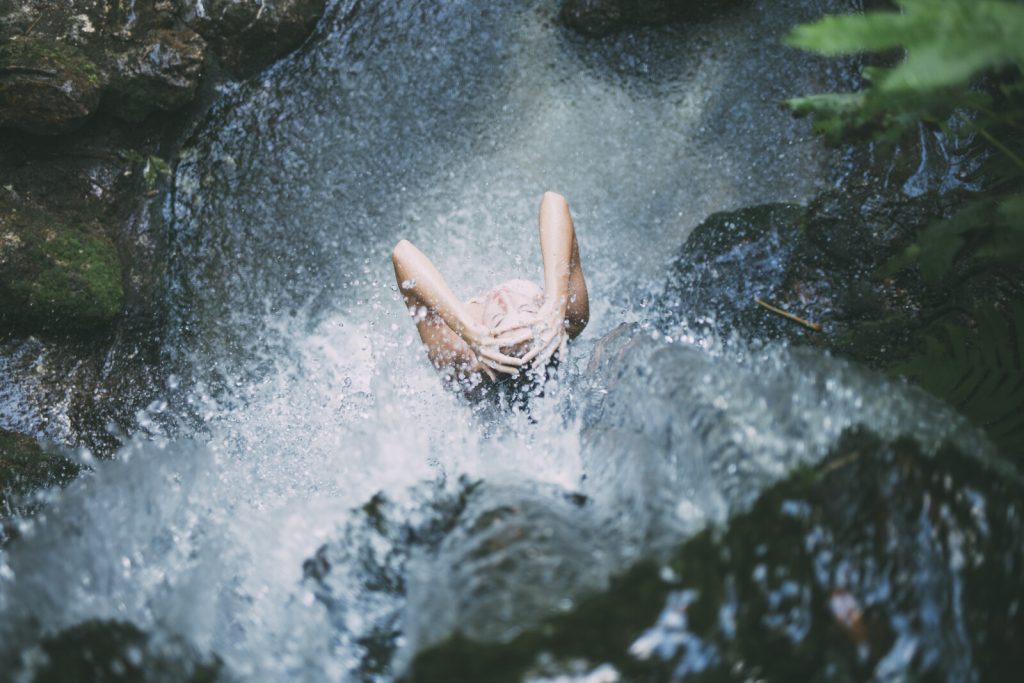Every year at least 350 million gallons of liquid shampoo and conditioner that contains harmful and legally unregulated ingredients toxic to our environment and aquatic life is washed away down drains just in the USA alone. Did you know that if all the empty bottles were laid out flat, they would fill over 1,000 football pitches?
When I thought about this for a second and considered how much time it would take to decompose this amount of material fully, it really did send a shiver down my spine. What disturbed me even more was the fact that I had been lathering up my hair and body with these toxins every day, damaging my skin and my hair and contributing to environmental damage. Shampoo Down Our Drains!
This really is bad news, right? Unless you really know what you’re looking for in that great list of chemicals on the back of your favorite shampoo bottle, you are likely leaving nasty chemicals on your scalp every time you bathe or shower, giving these harmful invaders the chance to slowly penetrate your skin, enter your bloodstream, and cause you harm.
WARNING: Many ingredients listed on the back of shampoo bottles are in such small print and barely legible. Most of us have never heard of the chemicals we’re looking at and find it hard to object to what we can neither read nor understand. Here’s what you should be looking out for and why.
PARABENS
Parabens are used in hair products as an effective and inexpensive preservative to prevent mold and bacteria growth. They mimic and could interfere with the production of estrogen in the body, and too much estrogen may increase the division of breast cells and the growth of tumors.
Parabens have been known to aggravate and make existing skin conditions like eczema far worse.
SULPHATES
Sulfates are used for cleansing hair; ammonium lauryl sulfate or sodium Laureth sulfate (SLES) are extremely strong detergents. They bind with water and the oil from our scalps, and their powerful cleaning action causes damage to the hair, making it brittle.
They are the cause of one of our worst nightmares, FRIZZ. Sodium lauryl sulfate (SLS) is the ingredient that creates that lovely bubbly foam we all seem to love. If you dye your hair watch out for this one, as it will strip your hair of natural oils and fade your color.
POLYETHYLENE GLYCOLS (PEG)
PEGS are compounds used to thicken, soften and carry moisture. They can often be contaminated by ethylene oxide, a known human carcinogen, and 1,4-dioxane, also a carcinogen known to affect the liver and kidneys. PEG is the abbreviation for polyethylene glycol, which is combined to make a thin and sticky liquid.
SODIUM CHLORIDE
Good old salt is also added to shampoos and conditioners to thicken them up. Continually rubbing salt into your scalp can make it extremely dry and itchy and could eventually lead to hair loss.
ALCOHOL
Any product with alcohol ingredients listed towards the top rather than the bottom will contain high amounts of them. Look out for the ‘bad ‘ones as they dry out your hair. They contain ‘prop’ in their name, for example, Isopropyl alcohol or propanol.
FRAGRANCE

If you see the word fragrance listed, it’s worth noting that the product could possibly contain thousands of hidden chemicals, some of which can cause cancer or asthma and irritate your skin/scalp. FRIZZZZZZZ!
COLORS
To make them more appealing, many shampoos have harmful synthetic colors added to them, usually listed as FD&C or D&C containing or followed with a number.
COCAMIDOPROPYL BETAINE
This one came from coconut oil and was used to create the lovely bubbly foam. It can irritate the skin and be the cause of rosacea and eczema.
TRIETHANOLAMINE (TEA) AND DIETHANOLAMINE (DEA)
These chemicals allow oil-soluble and water-soluble ingredients to be blended together. They are banned in cosmetics by The European Commission. Research into cancer effects on humans is unclear.
DIMETHICONE
Dimethicone is commonly used as a key ingredient in hair products. It gradually builds up in your hair to form a protective cover making it feel very greasy. This protective cover collects all kinds of residues and dirt and prevents nutrients and moisture from coming in. As a result, your hair becomes weak and damaged.
TRICLOSAN
Triclosan is an antibacterial agent well known for causing disruptions to hormones that could cause problems with fetal development or cause cancer.
RETINYL PALMITATE
Retinyl palmitate irritates the skin, causing redness, peeling, scaling, and itching. It could also cause reproductive problems and cancer. With regular use, it could eventually cause liver damage. This is yet another chemical that is banned in cosmetics by The European Commission.
FORMALDEHYDE
Formaldehyde is a known carcinogen used to preserve products. The one to look out for is quaternion-15.
Today the majority of shampoos are produced in laboratories. We have become far removed from what is natural and that which is healthy and good for our environment. These synthetic products are being vigorously rubbed into our hair and scalps before being rinsed down drains into our national supply, turning up in the surface, ground, and waste water, sediment, and even drinking water, which fortunately is treated, unlike oceans, rivers, and lakes.
Time to wake up

If you’re not quite ready to go “completely green” with your hair care yet but are keen to avoid shampoos with any of the nasty ingredients listed above, then look out for eco-friendly ones where every “all-natural” ingredient is listed individually, and not under one label of “fragrance,” you could also search for re-usable shampoo bottles while you are at it. Bottles 2 Bars!
If you want to go completely natural, eliminate all liquid shampoos from your hair care routine, opt for a shampoo bar. I can’t promise you that results will be instant, it may even take up to a couple of months for your scalp to balance out its own natural production of oils, but the effort and wait will be 100% worth it!
A point to note; your hair may go through a period of transitioning where it will very likely become very oily whilst your body adjusts to catch up with all that has been previously stripped, but hang on in there and stick with it, no matter how tempted you are to revert to synthetic products. Remember, if you do, you’ll have to start all over again.
If you’re going to continue to condition your hair, YOU MUST go the whole way and use a conditioning bar also. Never combine a shampoo bar with a traditional liquid conditioner.
Shampoos that are 100% natural will not create that lovely bubbly foam as easily as synthetic products are designed to, this is something you will have to work a little harder on to achieve, and you may find you are using more shampoo bars in the beginning whilst you are getting rid of the build-up of harmful and damaging chemicals on your hair.
Synthetic laboratory-made shampoos do make your hair look super healthy, glossy, and feel great. But under the surface, there’s a very different tale to tell. Underneath all those layers upon layers of chemical build-up, your hair is screaming out for moisture, gradually becoming dryer and dryer until it eventually begins to show.
Opting for 100% natural shampoo and conditioning bars rather than liquids in plastic bottles is a much better choice for the environment and also for you. Your hair will thank you for the swap, and once you’re passed the initial period of adjustment, you will look and feel fabulous once again.
Table of Contents